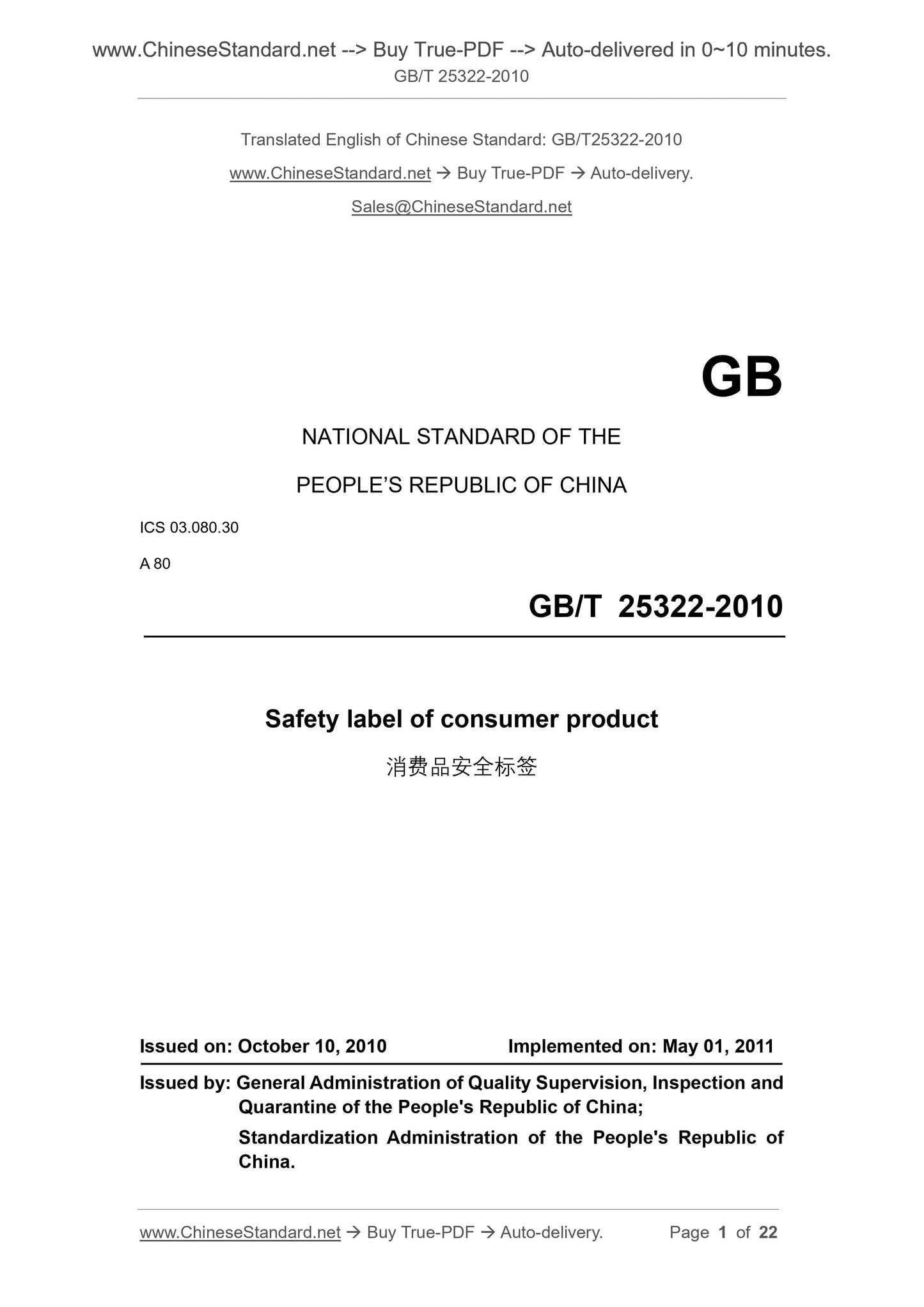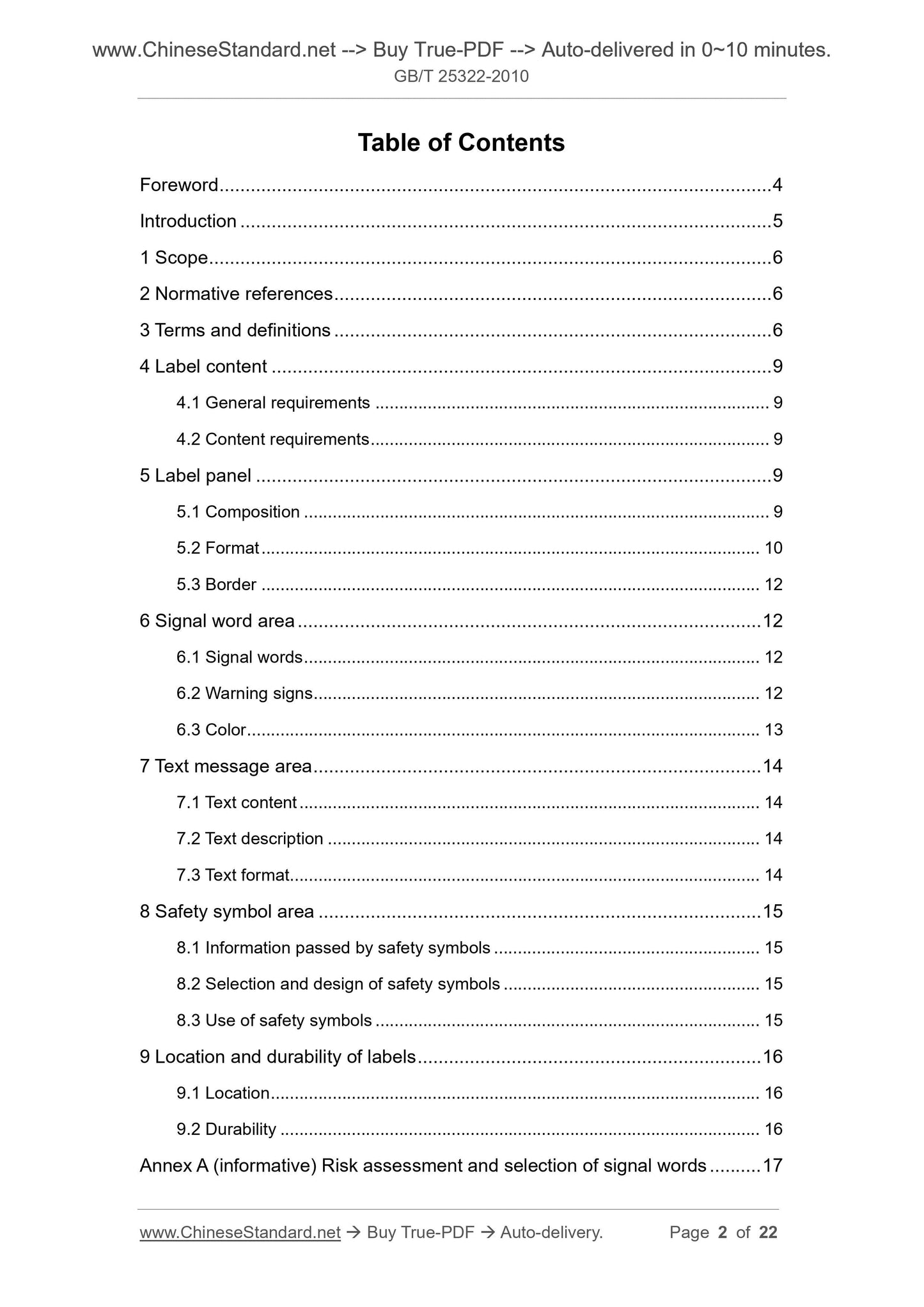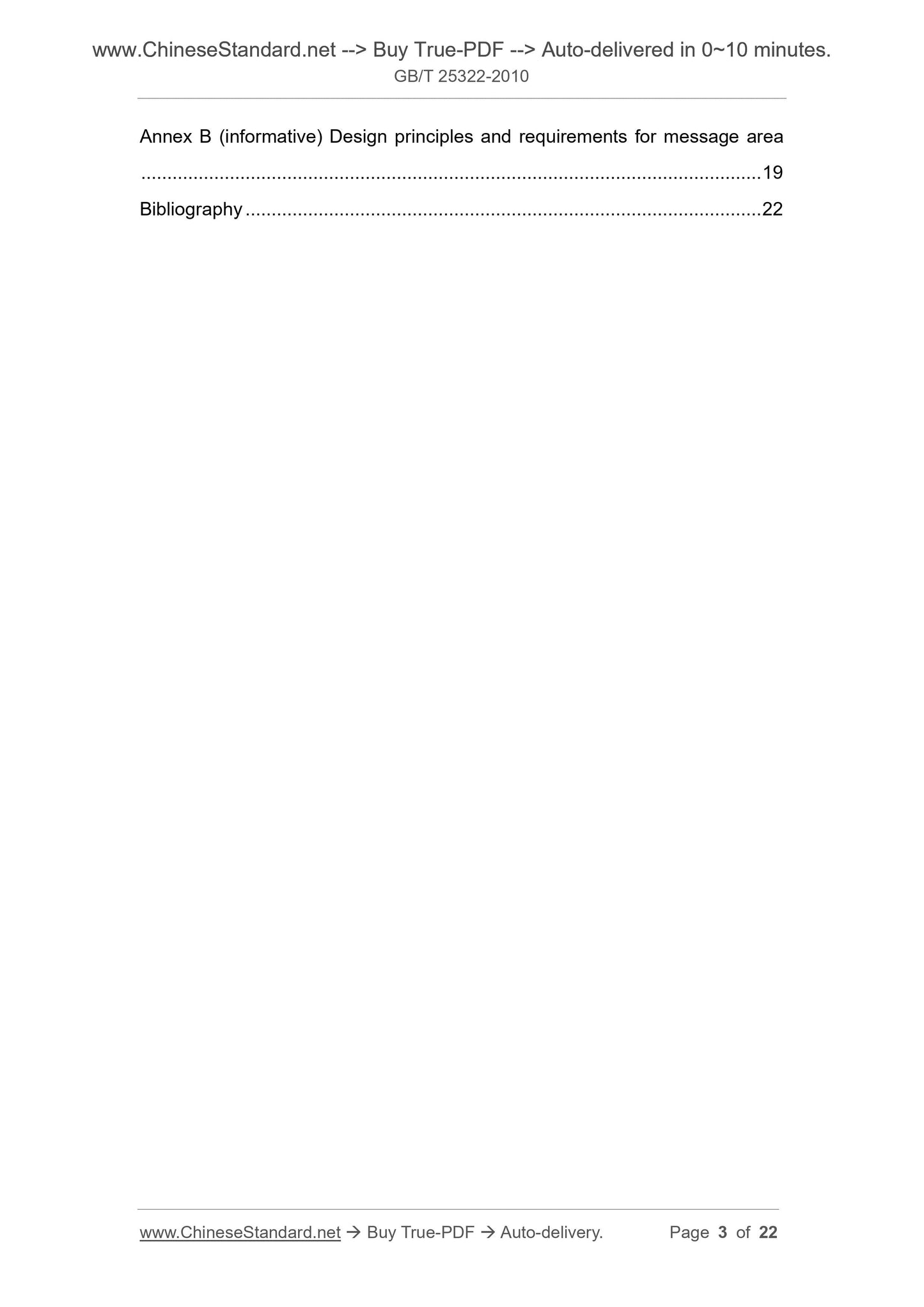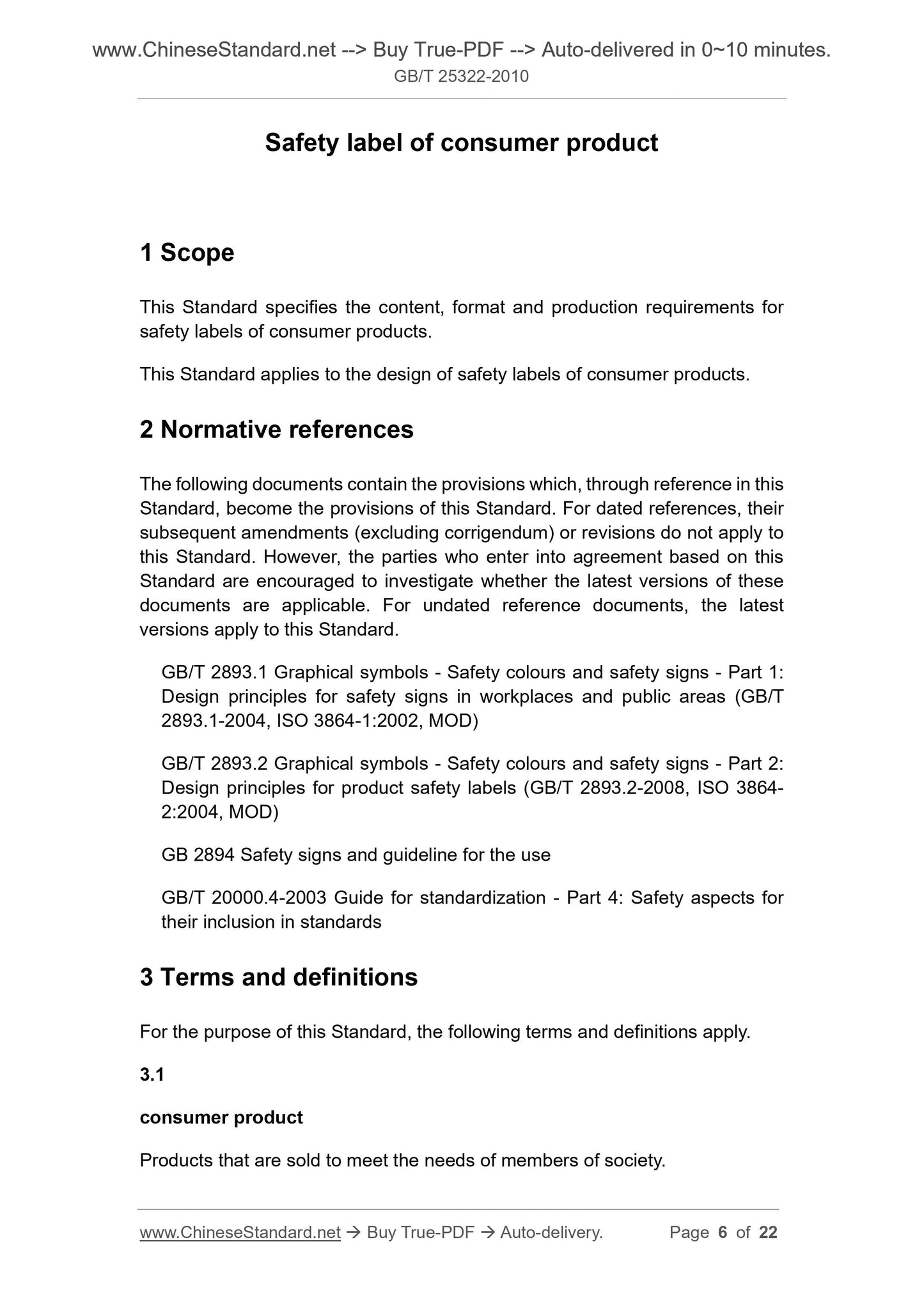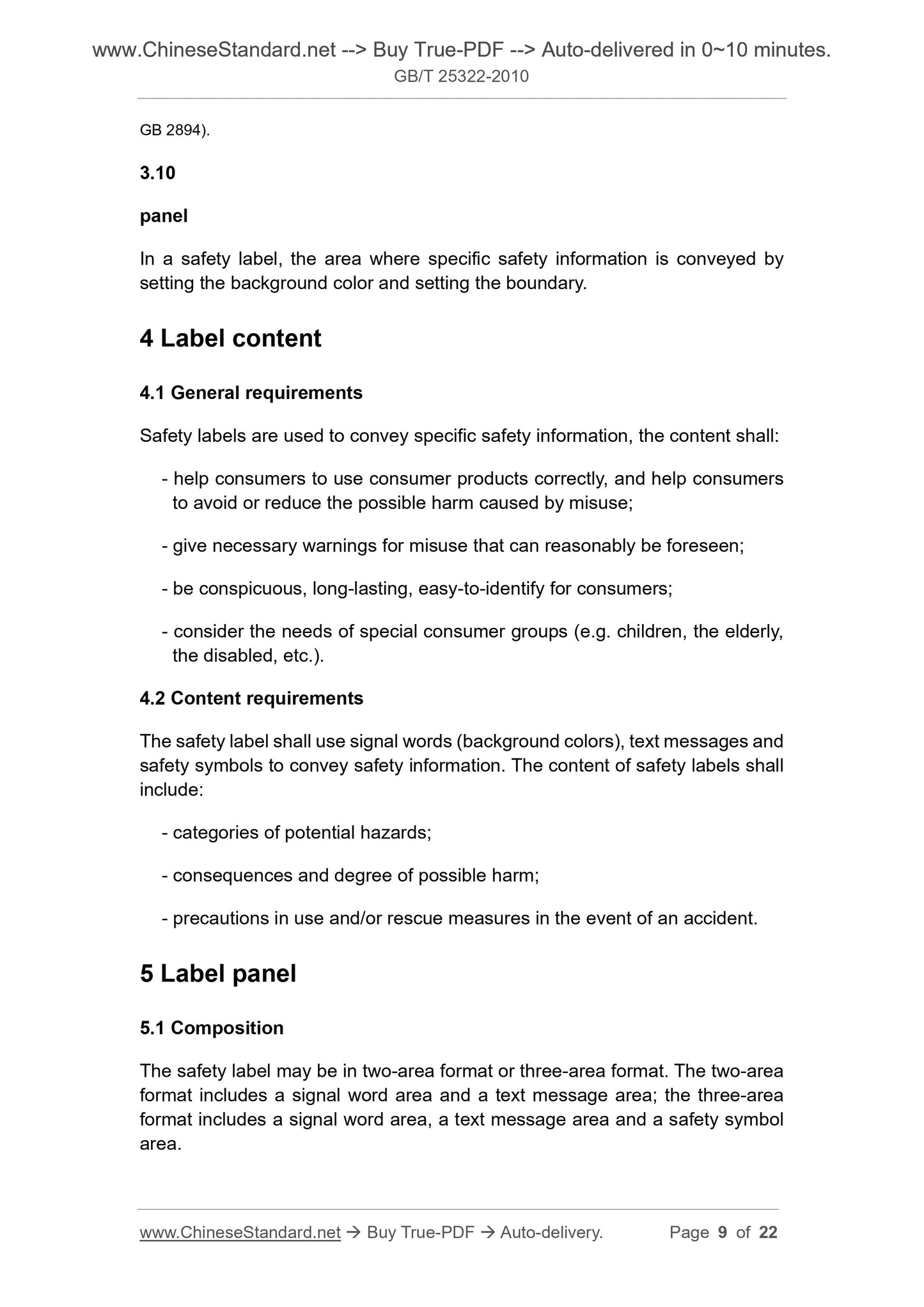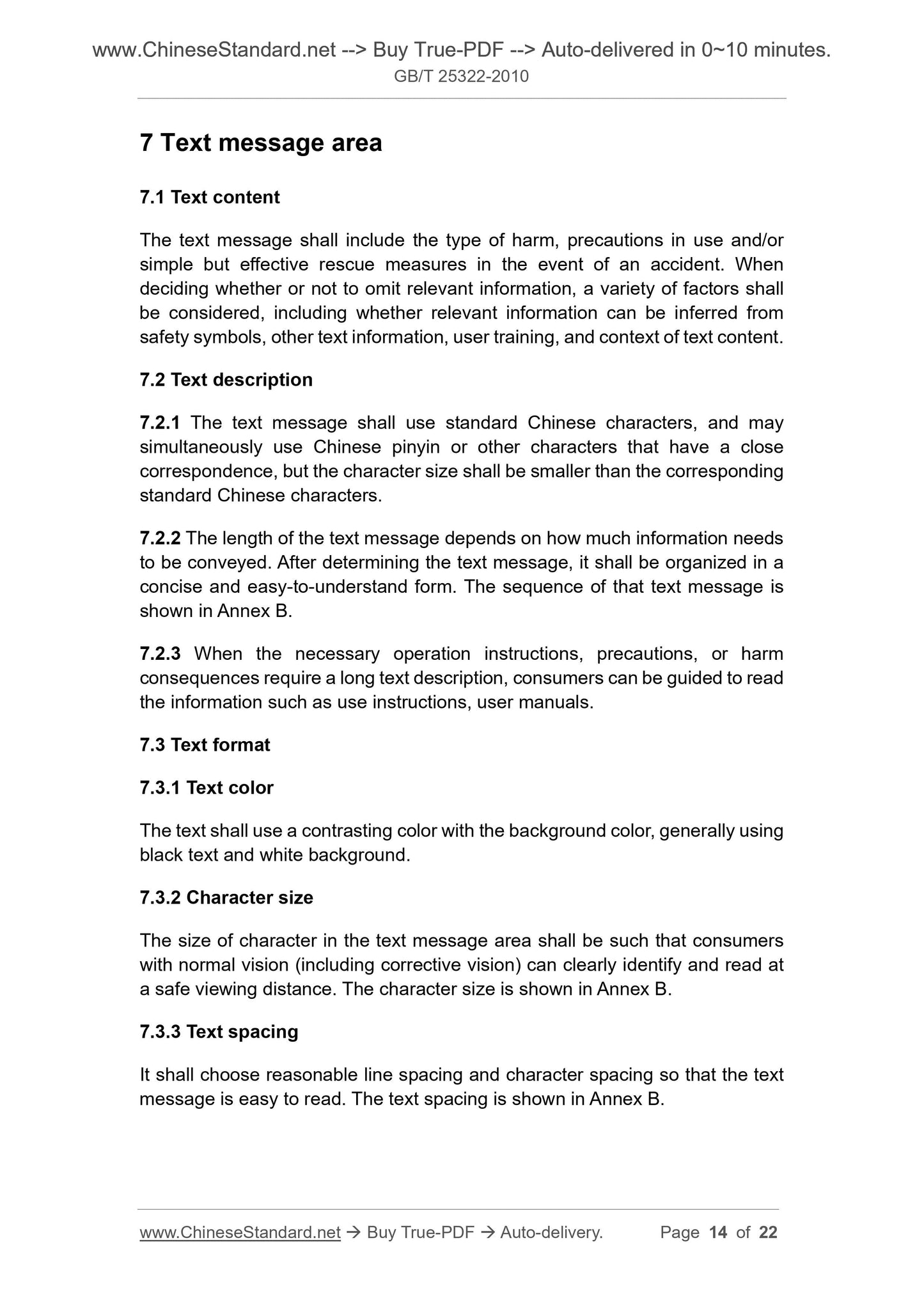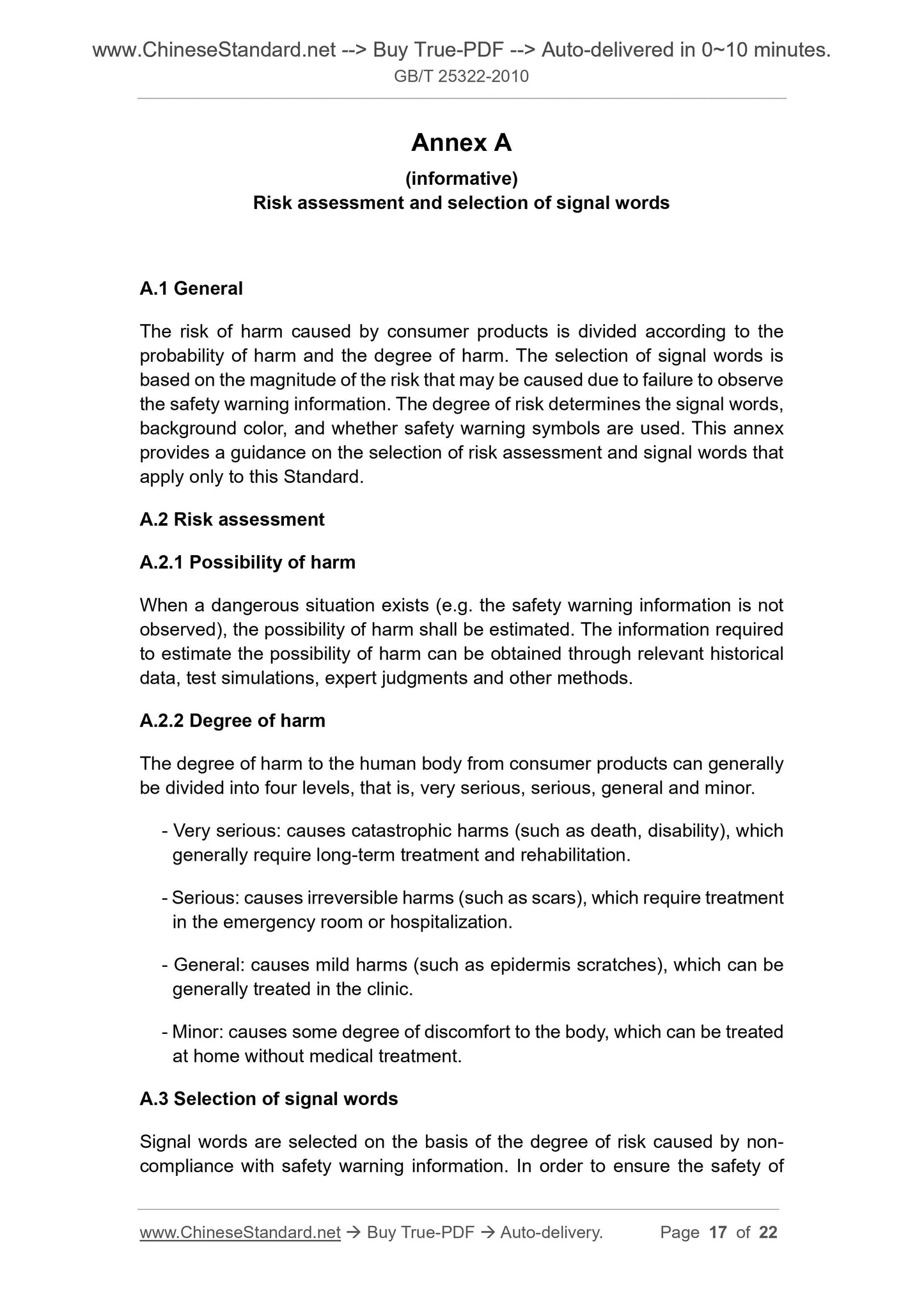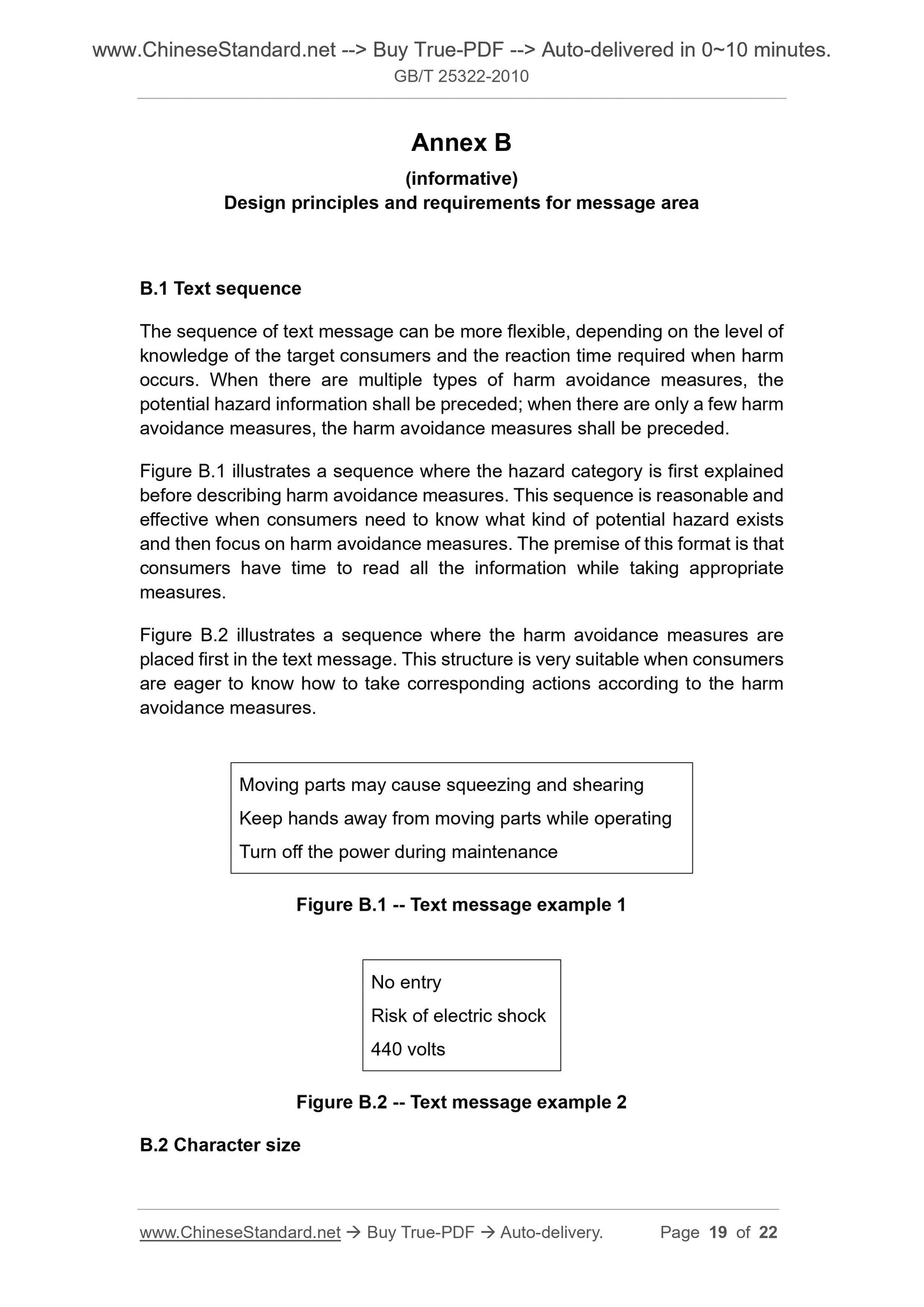1
/
of
8
www.ChineseStandard.us -- Field Test Asia Pte. Ltd.
GB/T 25322-2010 English PDF (GB/T25322-2010)
GB/T 25322-2010 English PDF (GB/T25322-2010)
Regular price
$150.00
Regular price
Sale price
$150.00
Unit price
/
per
Shipping calculated at checkout.
Couldn't load pickup availability
GB/T 25322-2010: Safety label of consumer product
Delivery: 9 seconds. Download (and Email) true-PDF + Invoice.Get Quotation: Click GB/T 25322-2010 (Self-service in 1-minute)
Newer / historical versions: GB/T 25322-2010
Preview True-PDF
Scope
This Standard specifies the content, format and production requirements forsafety labels of consumer products.
This Standard applies to the design of safety labels of consumer products.
Basic Data
| Standard ID | GB/T 25322-2010 (GB/T25322-2010) |
| Description (Translated English) | Safety label of consumer product |
| Sector / Industry | National Standard (Recommended) |
| Classification of Chinese Standard | A80 |
| Classification of International Standard | 03.080.30 |
| Word Count Estimation | 16,157 |
| Date of Issue | 2010-11-10 |
| Date of Implementation | 2011-05-01 |
| Quoted Standard | GB/T 2893.1; GB/T 2893.2; GB/T 2894; GB/T 20000.4-2003 |
| Regulation (derived from) | Announcement of Newly Approved National Standards No. 8 of 2010 (total 163) |
| Issuing agency(ies) | General Administration of Quality Supervision, Inspection and Quarantine of the People's Republic of China, Standardization Administration of the People's Republic of China |
| Summary | This standard specifies the Consumer Product Safety label content, layout and production requirements. This standard applies to consumer product safety label design. |
Share
